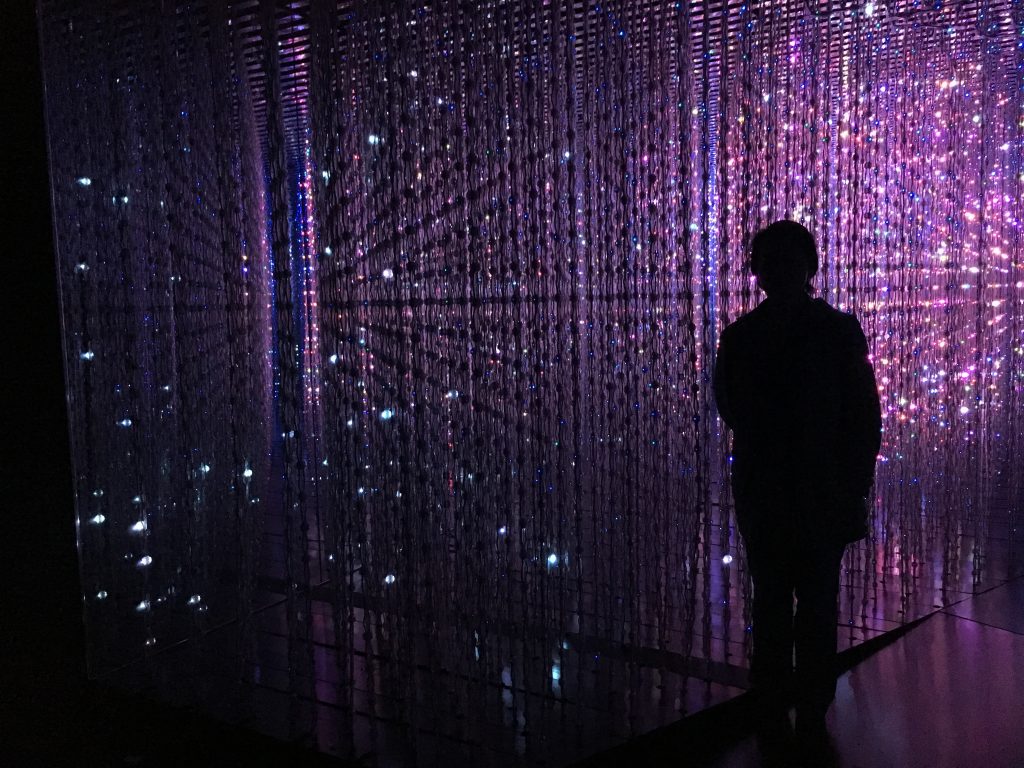
About 4 years ago, my family and I visited a TeamLab exhibit in Menlo Park, California. TeamLab are a group known for interactive spaces, sculptures, and exhibits, many of which immerse gallery visitors into an ethereal dimension.
The TeamLab exhibition in Pace Gallery featured unique exhibits such as a “flower room” where flowers were projected onto the floor with ceiling projectors, and every now and then some would disappear and pop up elsewhere. We ventured into a room filled with strands of crystal lights hanging straight down from the ceiling, meant to portray an infinite-looking space. Although this was one of the more well known exhibits of TeamLab, it wasn’t among my favorites.
A small exhibit meant for little kids actually intrigued me the most. Kids colored in templates of boats, buses, and cars and then fed them through a scanner. A giant projected screen, moments later, showed the kids’ drawings being transformed into digital models of cars bumbling about in a busy city.
There is very little information about the processes the members of TeamLab use to create these augmented-reality works, but their website mentions their interdisciplinary skills including programmers, CG animators, and mathematicians. Yayoi Kusama, a contemporary Japanese sculptor and artist, creates work similar to that of TeamLab. The work they produce has serious potential for the future, especially if virtual or augmented reality continue to grow in popularity and accessibility.
![[OLD FALL 2020] 15-104 • Introduction to Computing for Creative Practice](wp-content/uploads/2021/09/stop-banner.png)